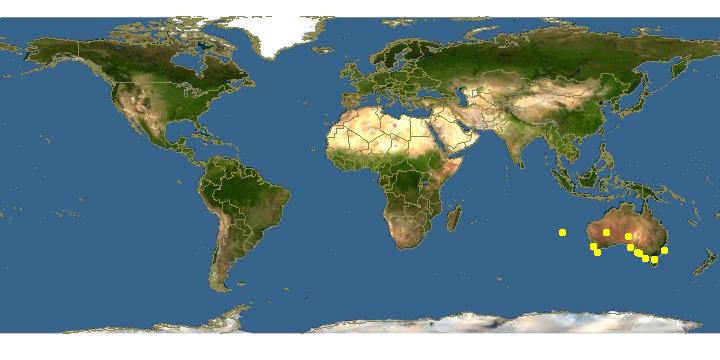http://www.fishbase.org/Summary/speciesSummary.php?genusname=Arripis&speciesname=georgianus ---> http://52.67.158.155/Summary/speciesSummary.php?genusname=Arripis&speciesname=georgianus
http://52.67.158.155/Summary/speciesSummary.php?genusname=Arripis&speciesname=georgianus ---> https://fishbase.net.br/Summary/speciesSummary.php?genusname=Arripis&speciesname=georgianus
https://fishbase.net.br/Summary/speciesSummary.php?genusname=Arripis&speciesname=georgianus ---> https://fishbase.net.br/summary/Arripis-georgianus.html
Arripis georgiana, Australian herring : fisheries, gamefish

You can
sponsor
this page
Common name (e.g. trout)
Genus + Species (e.g. Gadus morhua)
-

-
About this page
-
Languages
-
User feedbacks
-
Citation
-
Uploads
-
Related species
-


 Australian herring
Upload your
photos
and
videos
Australian herring
Upload your
photos
and
videos
Pictures
|
Google image
 Arripis georgiana
Arripis georgiana
Picture by
Good, P.
Classification / Names
Common names
|
Synonyms
| Catalog of Fishes(
genus
,
species
) |
ITIS
|
CoL
|
WoRMS
|
Cloffa
Teleostei (teleosts) >
Scombriformes
(Mackerels) >
Arripidae
(Australian salmon)
Etymology:
Arripis:
Latin, arripio, arripere = to take something suddenly
.
More on author:
Valenciennes
.
Environment: milieu / climate zone / depth range / distribution range
Ecology
Marine; brackish; pelagic-neritic; depth range 1 - ? m (Ref.
6390
). Temperate; 26°S - 39°S, 112°E - 150°E
Eastern Indian Ocean: endemic to the southern coasts of Australia.
Size / Weight / Age
Maturity: L
m
?
range ? - ? cm
Max length : 41.0 cm FL male/unsexed; (Ref.
27296
); max. published weight: 800.00 g (Ref.
27296
); max. reported age: 7 years (Ref.
27652
)
Dorsal
spines
(total): 9;
Dorsal
soft rays
(total): 16;
Anal
spines
: 3;
Anal
soft rays
: 10;
Vertebrae
: 25. Large eyes, diameter of which about one fifth of the head length. Body scales are slightly rough to touch. Body coloration: green above and silvery below with vertical rows of golden spots on the upper sides, tips of the caudal fin are black. Juveniles have dark golden bars on their sides (Ref.
6390
). Length of upper lobe of caudal fin < 29.9% SL (Ref.
9701
).
Usually found inshore in bays and estuaries over seagrass beds or near areas of seaweed (e.g. kelp), on rocky reefs, and along ocean beaches. Juveniles are found in inshore coastal waters, bays and inlets (Ref.
6390
). Feed on small fish and prawns (Ref.
27946
).
Both small, undeveloped ova (eggs) and larger ripe ova are present in the ovary at the same time. This phenomenon suggests that these species are either partial spawners (i.e. only some of the ova are spawned each time) or that the small ova remain in the ovary after spawning and are resorbed (Ref.
27945
).
Kailola, P.J., M.J. Williams, P.C. Stewart, R.E. Reichelt, A. McNee and C. Grieve
, 1993. Australian fisheries resources. Bureau of Resource Sciences, Canberra, Australia. 422 p. (Ref.
6390
)
IUCN Red List Status (Ref.
130435
)
Not Evaluated
CITES
Not Evaluated
Not Evaluated
Threat to humans
Harmless
Human uses
Fisheries: commercial; gamefish: yes
FAO - Fisheries:
landings
; Publication:
search
|
FishSource
|
Sea Around Us
More information
Countries
FAO areas
Ecosystems
Occurrences
Introductions
Stocks
Ecology
Diet
Food items
Food consumption
Ration
Common names
Synonyms
Metabolism
Predators
Ecotoxicology
Reproduction
Maturity
Spawning
Spawning aggregation
Fecundity
Eggs
Egg development
Age/Size
Growth
Length-weight
Length-length
Length-frequencies
Morphometrics
Morphology
Larvae
Larval dynamics
Recruitment
Abundance
BRUVS
References
Aquaculture
Aquaculture profile
Strains
Genetics
Electrophoreses
Heritability
Diseases
Processing
Nutrients
Mass conversion
Collaborators
Pictures
Stamps, Coins Misc.
Sounds
Ciguatera
Speed
Swim. type
Gill area
Otoliths
Brains
Vision
Tools
E-book
|
Field guide
|
Length-frequency wizard
|
Life-history tool
|
Point map
|
Classification Tree
|
Catch-MSY
|
Special reports
Check for Aquarium maintenance
|
Check for Species Fact Sheets
|
Check for Aquaculture Fact Sheets
Download XML
Summary page
|
Point data
|
Common names
|
Photos
Internet sources
AFORO (otoliths) |
Aquatic Commons
|
BHL
|
Cloffa
|
BOLDSystems
|
Websites from users
|
Check FishWatcher
|
CISTI
|
Catalog of Fishes
:
genus
,
species
|
DiscoverLife
|
ECOTOX
| FAO - Fisheries:
landings
; Publication:
search
|
Faunafri
| Fishipedia |
Fishtrace
| GenBank:
genome
,
nucleotide
|
GloBI
|
Google Books
|
Google Scholar
|
Google
| IGFA World Record |
MitoFish
|
Otolith Atlas of Taiwan Fishes
|
PubMed
| Reef Life Survey | Socotra Atlas |
Tree of Life
| Wikipedia:
Go
,
Search
| World Records Freshwater Fishing |
Zoological Record
Estimates based on models
Preferred temperature (Ref.
123201
): 15.2 - 20.5, mean 17.4 °C (based on 92 cells).
Phylogenetic diversity index (Ref.
82804
): PD
50
= 0.6250 [Uniqueness, from 0.5 = low to 2.0 = high].
Bayesian length-weight: a=0.00955 (0.00352 - 0.02589), b=3.01 (2.79 - 3.23), in cm total length, based on LWR estimates for this (Sub)family-body shape (Ref.
93245
).
Trophic level (Ref.
69278
): 4.3 ±0.76 se; based on food items.
Generation time: 1.3 (1.1 - 1.9) years. Estimated as median ln(3)/K based on 10
growth studies.
Resilience (Ref.
120179
): Medium, minimum population doubling time 1.4 - 4.4 years (K=0.8-1; tm=2-4; tmax=7; Fec=190,000).
Prior r = 0.70, 95% CL = 0.46 - 1.05, Based on 3 stock assessments.
Fishing Vulnerability (Ref.
59153
): Low vulnerability (22 of 100).
Climate Vulnerability (Ref.
125649
): Very high vulnerability (94 of 100).
Price category (Ref.
80766
):
Very high
.
Nutrients (Ref.
124155
): Calcium = 49.3 [28.8, 99.0] mg/100g; Iron = 0.573 [0.349, 1.000] mg/100g; Protein = 20.2 [17.9, 22.3] %; Omega3 = 0.781 [0.419, 1.487] g/100g; Selenium = 9.68 [3.97, 21.32] μg/100g; VitaminA = 15.4 [4.8, 55.3] μg/100g; Zinc = 0.587 [0.409, 0.855] mg/100g (wet weight);
Back to Search
Random Species
Back to Top
Accessed through:
Not available
FishBase mirror site :
Laguna, Philippines
Page last modified by :
mrius-barile
|





